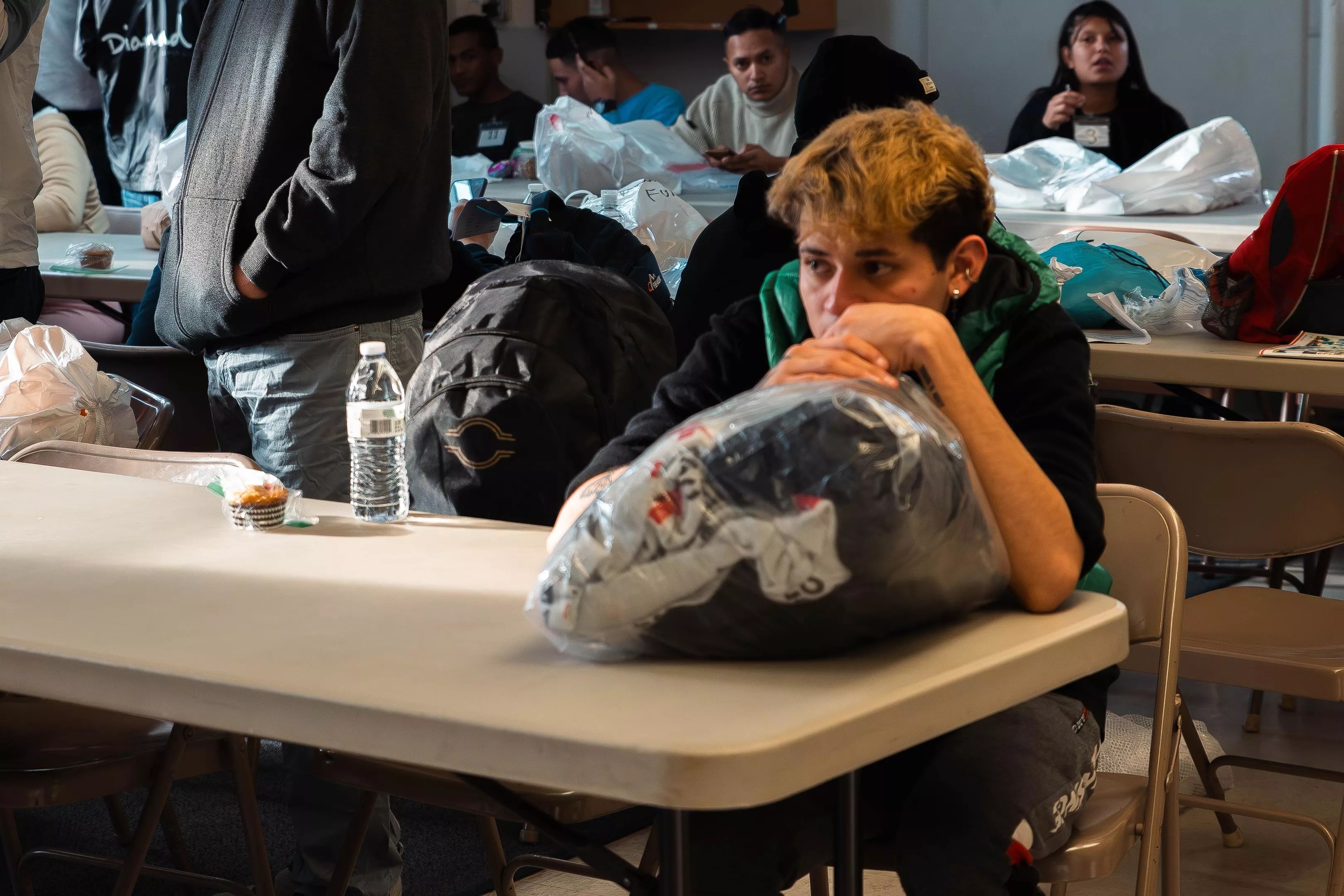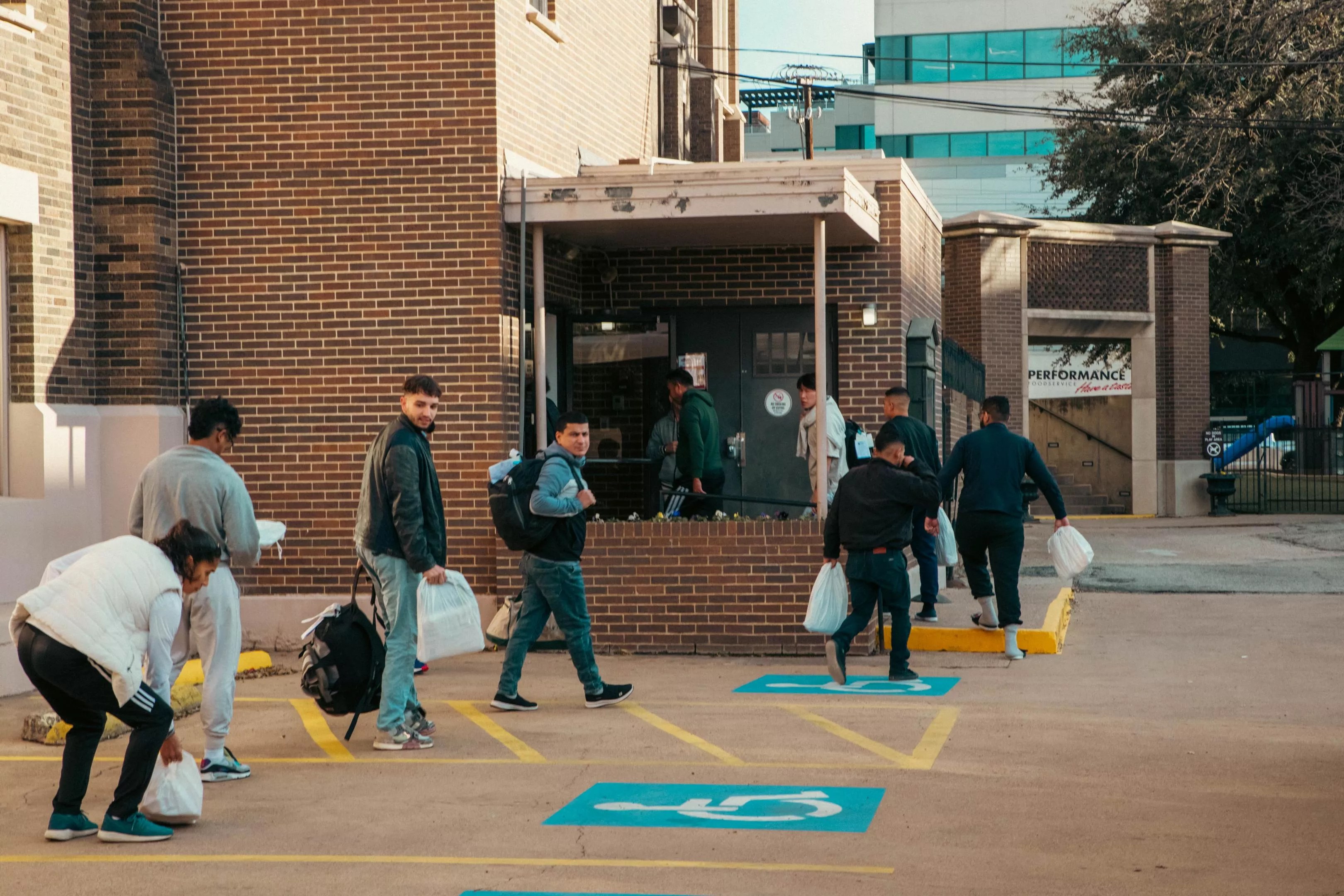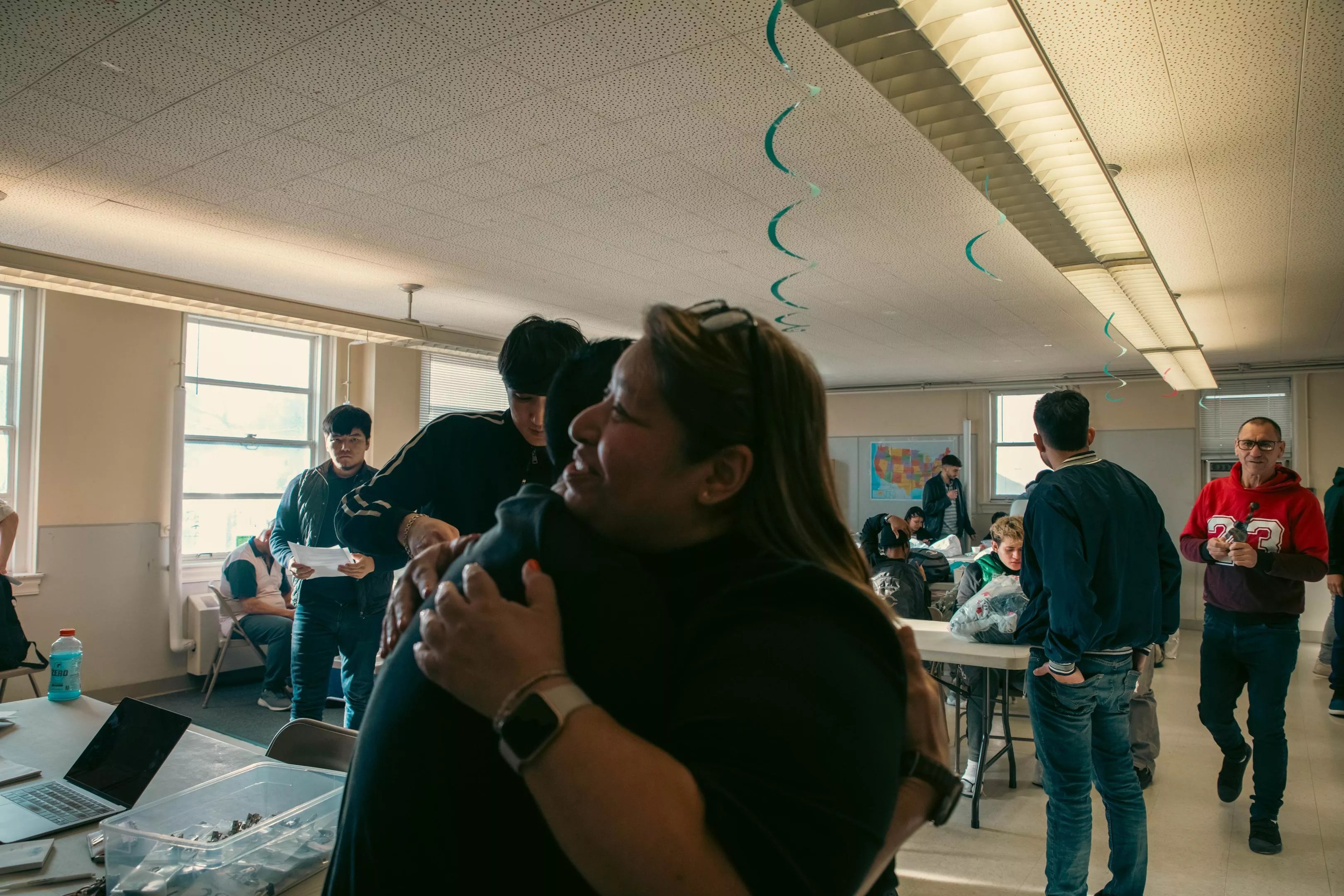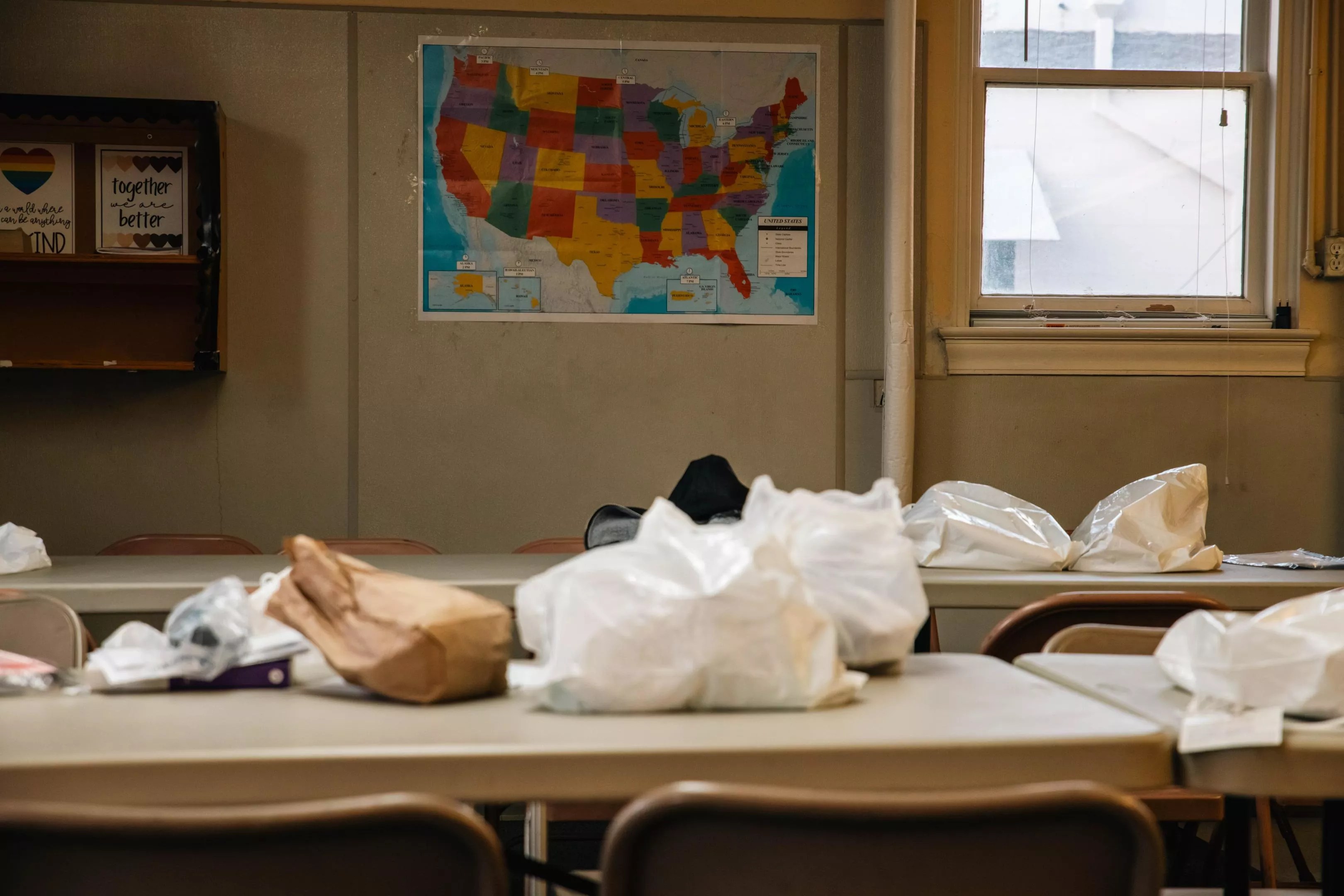
Carly Gravely

Audio By Carbonatix
Yoiber swayed gently in his seat as the bus crept into the church parking lot. His only belonging was a Bible his mom had given him ahead of the grueling journey. Cotton candy clouds streaked a pale blue sky that chilly February morning in Dallas. When the vehicle sputtered to a stop, Yoiber and the other passengers stood, stretched their legs and stepped out into the dawn.
It had been four months since Yoiber had last seen his family in Venezuela, a country with a horrid human-rights record of extrajudicial executions. Two of his brothers were victims of homicide. So, at 17, Yoiber fled amid threats he’d end up being the third member of his family to be killed.
Yoiber celebrated his 18th birthday alone while trying to reach the United States to seek asylum. He knew where he was headed – New York – but much of his future remained hazy.
The person he’d be staying with in Brooklyn couldn’t afford a plane ticket, so Yoiber would have to trust in God that he’d make it somehow, safe and sound.
Dallas, make your New Year’s Resolution Count!
We’re $10,000 away from reaching our $30,000 year-end fundraising goal. Your support could be what pushes us over the top. If our work has kept you informed, helped you understand a complex issue, or better connected you to your community, please consider making a contribution today.
“I just want to be with someone who will take me in, but I don’t even know how to get there or where to buy shoes,” Yoiber said in Spanish. “Being an 18-year-old kid in Dallas without anybody is horrible.”
Like Yoiber, the two dozen or so migrants who filed into the building that morning had parted ways with their countries of origin. They’d reached the Oak Lawn United Methodist Church after their time at a Texas detention center. Some seemed lost and confused, others appeared excited. All were exhausted.
The asylum seekers had entered a contradictory liminal space. They stood, uncertain, in a country built by immigrants but in a state where top officials openly express disdain for foreigners.
When the migrants were led into a large room, Yoiber sank into a metallic gray seat. Another weary traveler used a clear bag of clothing as a pillow. Two orange juice jugs, a coffee dispenser and a large bowl of bananas lined a table. Comforting messages in colorful scrawl greeted them: “Bienvenidos.” “Love yourself.” “You belong.”
Associate Pastor Isabel Marquez strode to the front of the room, flashed a smile and introduced herself.
“We work like a welcoming center,” she said in Spanish. (Few, if any, asylum seekers there that day spoke English.) “We do not work with immigration, or are a part of immigration.”
This announcement punctured the tired tension hanging in the air. Yoiber threw back his head and laughed: a relief.
Dallas Responds, the church’s outreach program, hosts the welcoming center, where migrants can rest, refuel and receive travel assistance. Those who weren’t picked up by loved ones could hitch a ride to the airport or Greyhound station, Marquez said. They could connect to Wi-Fi and charge their phones, and the room soon filled with chimes and trills.
While the Texas governor’s controversial busing effort dumps migrants unexpectedly in liberal-led locales, Dallas Responds takes a different approach: collaborating with families with the aim of reunification.
Yoiber sat quietly, his eyes still heavy with sleep. He had much on his mind and lots to look forward to in New York, which he described as a “pretty city full of new opportunities.” Maybe he’d study architecture.
But his time in the U.S. so far had been harsh. Authorities in El Paso disrespected the migrants – at times even acting as though they were subhuman.
“I wasn’t used to being around all officers, [who] treated me like a delinquent with handcuffs,” Yoiber said. “And I wanted to cry, but like my mom said: ‘If you fall, pick yourself up.'”
Yoiber and the other asylum seekers have a legal right to be here while their cases wind through the immigration courts. Many expats are running from persecution and real threats of violence, but the climate surrounding the Southern border has turned increasingly stormy in recent years.
From former President Donald Trump’s family separation policy to Texas Gov. Greg Abbott’s perilous buoy barrier, there’s little love shown for the immigrant.

Migrants from a variety of countries get off a bus and enter Oak Lawn United Methodist Church for assistance.
Carly Gravely
Marquez’s morning was buzzing with activity. She’d parked at the church after 7 a.m. to greet the migrants as they arrived in the big white bus. Dressed in her clergy collar, Marquez shepherded the new arrivals inside.
Numbered badges are assigned to each asylum seeker, and they wait to get called for registration at a folding table.
“That’s kind of the easy way and the process, which I hate, but it’s a very easy process to manage here,” Marquez said with an apologetic smile. “When we call ‘One!,’ I know that it’s one number that is going to be one, instead of three Josés or four Pedros.” (Yoiber was No. 2.)
Questions swirled around Marquez from all directions, and she answered each one with patience and grace. Migrants who didn’t understand Spanish or English would communicate through a phone translation app. Some that day spoke only Russian or Creole.
Marquez wasted no time getting everyone checked in. A conductor in a symphony of organized chaos, she moved with alacrity yet focused her full attention on whoever needed her help.
As the migrants nibbled on snacks, chatted on their phones or stared off into space, a second busload of asylum seekers pulled up and entered the church. Now, roughly 40 immigrants filled the frenetic room.
As far as Marquez knew, the shelters in Dallas are generally over capacity and are not accepting anyone else.
“That’s the first thing that I told them here: Unfortunately, we’re not a shelter, but we do want to help the process,” she said.
That process looks something like this: After the welcoming center opens its doors, migrants can decompress. Volunteers serve meals and distribute donated clothing. (Jackets were a hot commodity this winter amid reports of immigrants sleeping on snowy streets in cities like Chicago, New York and Denver.) Asylum seekers are then helped with transportation, hitching rides with volunteers to the bus station or airport.
Oak Lawn United Methodist Church acts as an in-between point, a sort of secular purgatory: the comforting space between the cold, indifferent detention center and a new home.
Buses arrive two or three times weekly and drop off around 300 people per week, Marquez said. Supplies dwindle quickly. The welcoming center is in constant need of donations, from financial assistance to backpacks to clothing to food. One sweet lady enjoys dropping off homemade cookies.
Immigration is part of what makes the U.S. beautiful, Marquez said, yet misconceptions abound.
“[Asylum seekers] are waiting for the courts, they are coming with a number. They are cleared by immigration, and they are cleared for any issues that people might be scared of,” she added. “These people are looking for an opportunity and chance to be here. … We need to remember that this country was founded by immigrants.”
“I just want to be with someone who will take me in, but I don’t even know how to get there or where to buy shoes.” – Yoiber, a migrant from Venezuela
Migrants reaching the Southern border have endured a long and arduous expedition, said Shalaina Abioye, executive director of the Human Rights Initiative of North Texas. Most of these asylum seekers – whether because of social status, nationality, race, religion or political opinion – were driven from their homes out of a legitimate fear of persecution.
That’s not to say the decision to venture to the U.S. was easy, nor that the ensuing landscape was kind. Many migrants carve out a path through Latin America, she said. But heading north can be unsafe, and vulnerable migrants may encounter wrongdoers looking to exploit them along the way.
“By the time they get to the United States, they have gone through the trauma of being persecuted in their country, the trauma of their pathway to the United States – that physical journey – and then just getting past the border is another extremely difficult thing for them to do as well,” Abioye said. “And so once they get here, we want to welcome them with open arms, because we know to get here has taken a lot from them.”
Gov. Greg Abbott assumed his place in front of the line of troops. His crisp white button-down contrasted with the get-up of the soldiers, who donned sunglasses and camouflage and held guns. The Lone Star State, Abbott explained during the Feb. 16 news conference, would be introducing a new approach to boosting its border security.
“We are building a new Texas Military Department base camp that allows the Texas National Guard to increase and to improve operations in this area,” the Republican said. This, he added, would allow a greater number of personnel to work efficiently and effectively in Eagle Pass.
Border operations have indeed turned more militant in recent years. GOP officials now favor combat terms, including “invasion” and “self-defense,” when describing immigration. Abbott drew fury in January after stating that Texas isn’t shooting migrants crossing the border because “the Biden administration would charge us with murder.” That same month, outrage soared after a woman and two kids drowned in the Rio Grande while attempting to reach Texas; state military officers had reportedly blocked federal border agents from rendering them aid.
Claims of migrants getting slashed by razor-wire barriers have horrified observers. Troopers were allegedly commanded to withhold water from parched pilgrims amid last summer’s brutal heat.
Some border agents are more compassionate than others, said Abioye. Those who first clocked in between 2017 and 2021, when Trump was in the White House, may lean more hostile than humanitarian.

Associate Pastor Isabel Marquez greets one of the migrants her church has helped get to their new home.
Carly Gravely
Abioye’s organization provides legal services to people seeking asylum, but it lacks the resources and capacity to help everyone in need.
“A lot of them will find themselves going from agency to agency and being turned away, saying, ‘Sorry, our caseloads are at a max. You have to go on a waiting list and you have to wait until we have consultations open up,'” she said. “And then they go to the next organization and hear the same thing.”
Whether an asylum case is successful may also depend on the state to which someone is headed. While more than two-thirds of cases were approved in New York’s immigration courts in Fiscal Year 2021, Texas gave the green light to only 39%, according to the Migration Policy Institute, a nonpartisan think tank.
It also takes around 12 months for asylum hopefuls to receive employment authorization, Abioye said. Cases used to hit the court within a couple of years, but now, some may take as long as eight years.
Around 3 million pending cases were congesting the immigration courts as of late 2023, smashing records.
Abioye is married to a former immigrant who’s since become a citizen, and she has worked with migrants for more than 15 years. She underscored that when folks leave their homes, they’re often entering a country where the language, customs and culture are drastically different.
“For them to have to take that risk means that it’s out of necessity for them: for safety, for freedom, for equal access to things,” she said. “So, I think the misconception is that people just want to be here for the sake of being here, but they want to be here because they need to be here – because it’s not safe for them to be at home.”
One 18-year-old woman at the welcoming center that day in February had fled Guatemala partly because of a lack of security. She looked like she could burst into tears at any moment.

All of the belongings of the migrants who arrive in Dallas by bus fit into small plastic bags.
Carly Gravely
A young Salvadoran woman in her 20s said she’d suffered physical and psychological abuse at the hands of authorities because of her tattoos. (In their sweeping crackdown on violent gangs, El Salvador’s authorities are treating anyone with any such marking as a terrorist, The Intercept reported.)
Marvin, 33, said he’d made the excruciating decision to come to the U.S. from Honduras, leaving behind his wife and two young kids. He had a business back home but feared for his family’s safety after rogue “groups of people began asking for money to serve as security there.” He already struggled to make ends meet and couldn’t afford to pay nefarious actors on top of that.
Marvin’s goal was to receive asylum and start working in the U.S. to provide for his family in Honduras. Eventually, he said, he’d bring them here so that they could attain legal status.
Standing in the hallway of the cacophonous welcoming center, Marvin processed a mix of emotions.
“I am happy that I’m here: that I have hope, that I have a new way to protect my family and that I escaped the threats,” he said, speaking Spanish, as a serious expression crossed his face. “But on the other side, I am sad because I left my family behind, my children. I don’t know when I’m going to see them again.”
Unlike most of the other asylum seekers at the center that day, Marvin’s final destination was Dallas, where he’d reconvene with friends.
A short time later, a black truck pulled up to the church. Marvin walked out of the bustling building and into the warm embrace of the sun. His worried expression had by then melted away, and he allowed himself to smile as he settled into the passenger seat. The truck crawled out of the parking lot and onto the streets of Marvin’s new home.
Kevin Chavez contributed translation services to this report.